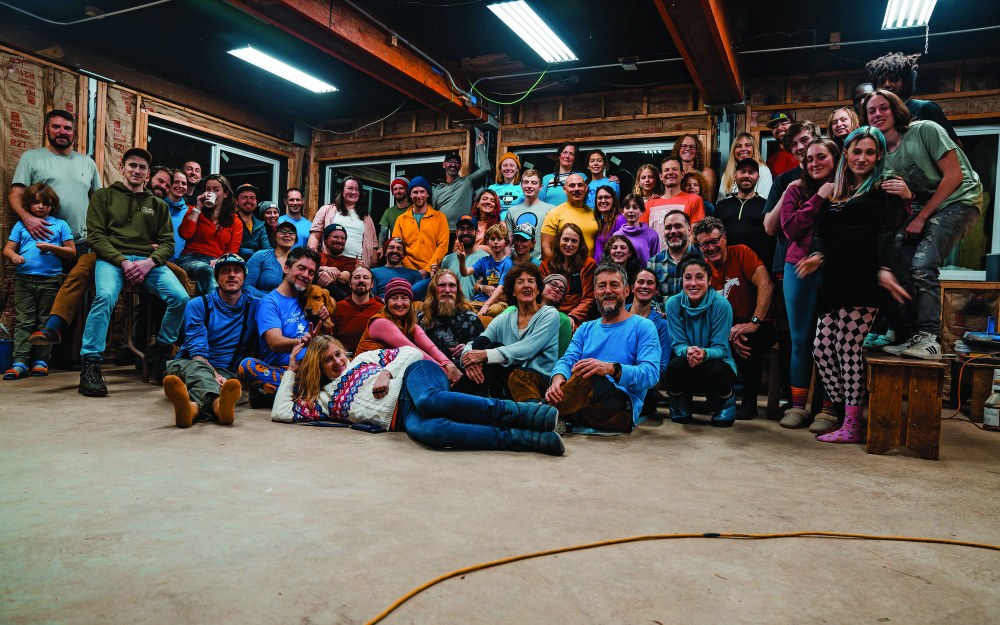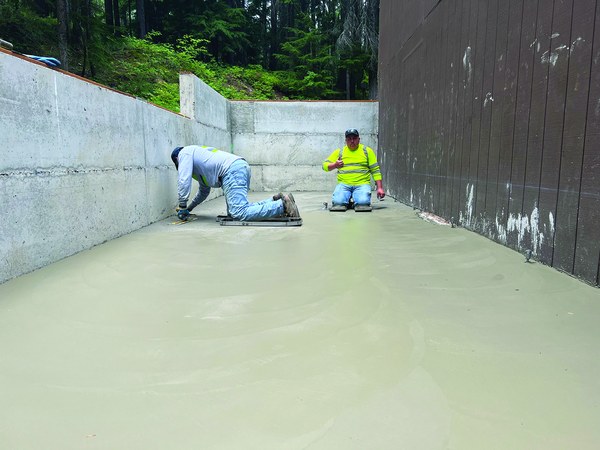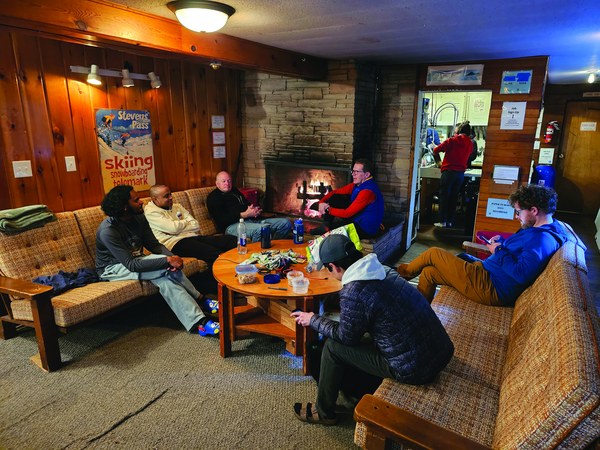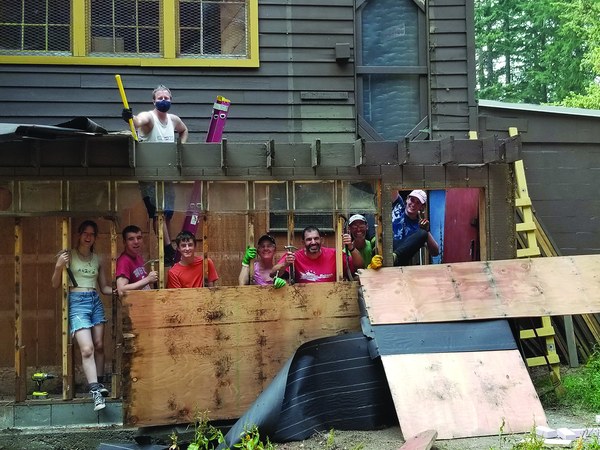
A year into our strategic plan, Adventure with Purpose, we’re making significant strides to continue improving support for our mission. To better address the needs of our volunteers who run and operate our three lodges, we are expanding resources and making dedicated financial investments. Of the many improvements taking place this season, I’m excited about a new opportunity to accelerate infrastructure improvements to revitalize Baker, Meany, and Stevens Lodges.
About a year ago, a Mountaineers family approached us with an offer of an investment gift to build on recent projects and accelerate progress in our lodge capital improvements. The family was interested in supplementing the improvement and maintenance investments already budgeted for, allowing us to get more done, faster. Our lodges and outdoor centers provide an entry point for many first-time visitors and quickly become a gathering place where generations of families return season after season. The family had experienced the value of our lodges, and wanted to fund projects that would make operations easier for volunteers while preserving and revitalizing the lodges for future generations.
We presented this opportunity to The Mountaineers Board of Directors at the November Board Retreat at Baker Lodge and invited the Board to approve our application for a $500,000 grant from the anonymous donor.
For those of you who’ve experienced the communal experience of Mountaineers lodges, you know that upon arrival, a guest is offered a bunk, a meal… and a chore chart. The same goes for the revitalization of our lodges. To make our grant a reality, the Board agreed to sign up for additional “chores” to demonstrate our elevated financial commitment alongside the donor. In simple terms, this required that in addition to a $500,000 baseline repair and maintenance budget planned for 2024-2028, the Board committed a $200,000 investment to accelerate other improvements.
 Construction at Meany Lodge's zoo extension. Photo by Matt Simerson.
Construction at Meany Lodge's zoo extension. Photo by Matt Simerson.
Making a place feel like home
Opportunities to improve the places that make The Mountaineers special are elevated through philanthropy. Thanks to the generous support of members and donors, our fundraising program is experiencing incredible momentum. As I’m writing this, we’re on the heels of the most successful Gala yet, having raised $660,000 (and climbing!). Fundraising efforts like the Gala provide critical unrestricted support across all of our impact areas, including investments in our outdoor centers.
One of my favorite parts about the Gala is working with leaders like Esa Tilija (daughter of Maya Magarati and Nil Tilija, who moved here from Nepal 23 years ago) whose personal stories exemplify how The Mountaineers makes a place feel like home. Esa was a speaker at our Gala this year, and as part of the fundraising program she shared the heart-work of the community she’s found within The Mountaineers. It all started at Baker Lodge.
“My first transformative outdoor adventure took place with The Mountaineers, spending the weekend with my family at Mt. Baker Lodge, my favorite place in the world,” Esa said.
Over the years, Esa cultivated a multi-generational community through weekends at the lodge, witnessing time and again how Baker’s communal gathering spaces provide first-time experiences that transform a person’s relationship with the outdoors. She still volunteers at Baker Lodge, introducing others to the magic of our mountain homes.
“Just last month, I helped host 62 folks of Himalayan descent with the Nepal Seattle Hiking Community,” Esa said. “Participants ranged from ages 4-82. There were world renowned Sherpa mountaineers from our community, but for most folks, it was the first time they had ever stayed at a lodge, or experienced snow in Washington. This full-circle experience brought back memories at Baker Lodge, which are such a big part of who I am today.”
 Mountaineers scrambling students at Stevens Lodge. Photo by Steve McClure.
Mountaineers scrambling students at Stevens Lodge. Photo by Steve McClure.
Even centuries old traditions need stewardship and care
Esa’s story is one of thousands that makes up the fabric of those who’ve experienced our lodges for nearly 100 years. The love and hospitality Esa felt with her family is the same tradition that welcomes more than 2,500 visitors, young people, and families to The Mountaineers lodges every year.
Increasingly, our lodges are not just winter destinations for snowy adventures — they’re used year-round for activities and programs such as Mountaineers courses, summer youth camps, Pacific Crest Trail overnights, and educational excursions such as Meany’s Mushroom Weekend.
The desire to expand lodge use while operating in harsh mountain conditions has increased the need for a thoughtful approach to ongoing maintenance and revitalization projects. We’ve focused efforts over the last five years to address deferred maintenance projects and make high-priority improvements at our lodges. Examples include installing heat pumps at Stevens and Meany, remodeling the bathrooms at Stevens, upgrading the water system at Meany, building a new teaching room and replacing windows and siding at Baker, and converting lighting at all lodges to energy-efficient LED fixtures. Thanks to the generosity of lodge volunteers and donors, with the support from the Board of Directors, we’ve invested more than $750,000 in these projects over the last five years.
To make the most of our investment, we’ve made cost-conscious decisions about sourcing materials and selectively using professional contractors for complicated jobs. This approach has allowed us to make headway on some of our highest-priority projects; however, there are still significant needs to be tackled. A new roof, oven, and commercial dishwasher are needed at Meany; the electrical service at Stevens needs an upgrade along with a new stove, range hood, and countertops; and Baker will require an upgraded water system and interior and exterior finishes associated with the new teaching room. In short, we’ve accomplished a lot the last five years, and there’s quite a bit more to be done.
 Volunteers helping making repairs at Meany Lodge. Photo by Jim Fahey.
Volunteers helping making repairs at Meany Lodge. Photo by Jim Fahey.
Many hands make light work
As many lodge-goers know, at the close of a weekend stay, we all pitch in to help. Together, we do dishes, sweep the floors, clean up the bunk rooms, and scrub sinks and toilets. Before departing, we divide trash and recycling to take home. For one person, it’s a lot to get done, but it’s not much effort when we work together.
In a similar way, revitalizing our lodges requires community effort. For some folks, this might mean making a financial gift. For others, it might mean offering professional contract work at favorable rates or even as an “in kind” gift to The Mountaineers. For many volunteers, it means continuing to lead and invest time and skills into supporting our lodges.
In the next few years, we have the opportunity to do something special for the future of our community. Revitalizing our lodges is truly a “many hands make light work” experience. The Mountaineers way is to work as a community — just like we do when staying at a lodge, contributing to write Freedom of the Hills, volunteering to restore a trail, or teaching people to recreate mindfully. Simply put, we’re our best selves as members of a vibrant community working together to accomplish our goals.
If you’re inspired to support this work, I hope you’ll consider adding your name to the “chore chart” to help revitalize our lodges. If you’re interested in discussing how you can help, please reach out to briv@mountaineers.org with your ideas and questions. We look forward to providing more updates along the way.
This article originally appeared in our summer 2024 issue of Mountaineer magazine. To view the original article in magazine form and read more stories from our publication, visit our magazine archive.
 Bri Vanderlinden
Bri Vanderlinden